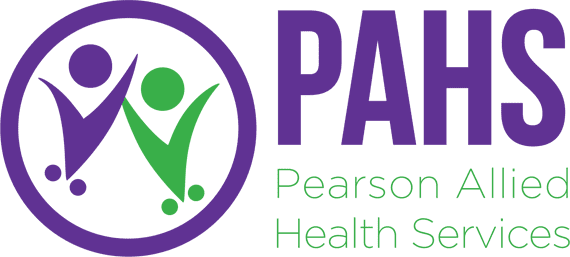For people who are non-verbal or minimally verbal, meaning they are unable to communicate through talking, Augmentative and Alternative Communication or AAC is an option.
What is Augmentative and Alternative Communication (AAC)?
Augmentative and Alternative Communication or AAC is the term used to talk about different methods of communication. AAC can include simple systems like pictures, gestures and pointing, as well as more complex techniques involving computer technology.
We can break AAC up into basic categories:
- NO TECH: communication that does not involve any additional equipment e.g. body language, gestures, pointing, eye contact, facial expressions, vocalizing, signing.
- LOW TECH: communication that involves little to no battery power e.g. pen and paper to write or draw messages, alphabet and word boards, communication charts or books with pictures/photos/symbols, particular objects used to stand for what the person needs to understand or say.
- HIGH TECH: communication that can range from simple buttons or pages that speak/generate speech to very sophisticated tech systems and usually need power from a battery e.g. technology based on mobile phones, tablets/iPad, laptops or specially designed equipment to support communication.
There are some key strategies to communicate to someone who is non-verbal:
- Use simple language. Try to avoid using complex language or instructions that may be confusing.
- Focus on nonverbal communication. Gestures and eye contact can build a foundation for language. Use both your body and your voice when communicating – for example, by extending your hand to point when you say, “look” and nodding your head when you say “yes.”
- Leave “space”. It’s natural to feel the urge to fill in the ‘awkward silence’ when someone doesn’t immediately respond, but it’s important to give the person lots of opportunities to communicate, even if they aren’t talking.
When we engage with non-verbal children, we can use some simple techniques to maximise communication:
- Encourage play and social interaction. Interactive play provides enjoyable opportunities to communicate. During your interactions, position yourself in front of the child and at eye level – so it’s easier for the child to see and hear you.
- Imitate the child. Mimicking the child’s sounds and positive play behaviours will encourage more vocalizing and interaction. It also encourages the child to copy you and take turns.
- Follow your child’s interests. Rather than interrupting the child’s focus, follow along with words and narrate and label what the child is doing. If they are playing with a shape sorter, you might say the word “in” when they put a shape in its slot. By talking about what engages your child, you’ll help them learn the associated vocabulary.
One of the most effective techniques is modelling.
Modelling in AAC is a technique that is support by research and clinical experience. It has been shown to teach language (vocabulary and grammar) and increase responsiveness and use of AAC. People learning to use AAC need increasing amounts of input (modeling) before they can be expected to produce output. They also need to have access to their device at every opportunity. People learn from hearing and watching the people around them communicate and interact. Non-verbal people are the same; they need to see the language being used before they themselves can use it.
Modelling helps people see the opportunities and language their device can be used for. It’s more than just “talking” – communication involves commenting, asking questions, greeting, refusing, expressing emotions, arguing etc.
- Modeling shows people how to use AAC successfully and how to put together a message.
- Modeling shows the person that people accept the AAC system because they are willing to use it.
- Modeling makes others aware of what it is like for the person to use the system and if the expectations of others are realistic.
- Modeling makes you aware of what you need on the AAC system. When someone goes to point out at a message and the words are not there, then it shows how and why the person cannot always join in, and the system can then be modified to compensate for this.
It’s actually quite simple to model?
- Point out the main words that you say on the AAC device.
- Show the person how they can communicate and ‘say it’ on their AAC device e.g. pointing to toast and then pressing ‘toast’ or pressing ‘that’s funny’ when the person is laughing.
- How to use the deviceg. “I’m pressing on ‘animals’ to get to the animal page.” Think out loud and talk about what is happening in order to find the message.
- Model 1 or 2 words above what the person can currently communicate (e.g. a person using one word combinations on their device ‘ball’ can be modeled ‘want ball’ or ‘red ball’.)
- Model target vocabulary and grammar (e.g. a person says ‘boy run’, ‘the boy is running’ can be modeled to them.)
- Model slowly enough for the person to follow the page sequences or symbols being used.
- Model with the symbols on the device and verbal speech (e.g. “oh you want more (also pressing ‘more’)).
- If you make a mistake, model what to do to the person when things go wrong and how you ‘repair’ it, so they can do the same.
- Be perceptive to the person’s behaviour and consider why they’re doing what they’re doing. Model the language that has been used to communicate the message (e.g. throwing a toy – ‘oh you want to do ‘something different’”).
Other specific strategies:
- Expectant delay: giving the person extra time to increase opportunities for communication. Look at the person expectantly, with eyebrows raised, to let them know you are waiting for them to have a turn.
- Asking open ended questions: moving away from yes/no questions can encourage more complex language e.g. “did you have a good time at school today?” vs. “what did you do at school today?”
- Increase responsitivity: accept any attempts the person makes to communicate and expand this e.g. the person presses ‘eat’, then respond immediately and positively “yes let’s eat the cake! (pressing ‘eat’ and ‘cake’).
Remember…
It’s not going to be perfect!
It’s going to take time!
It is better to be using the AAC device even if you’re not proficient with it, than to be not using it at all!


